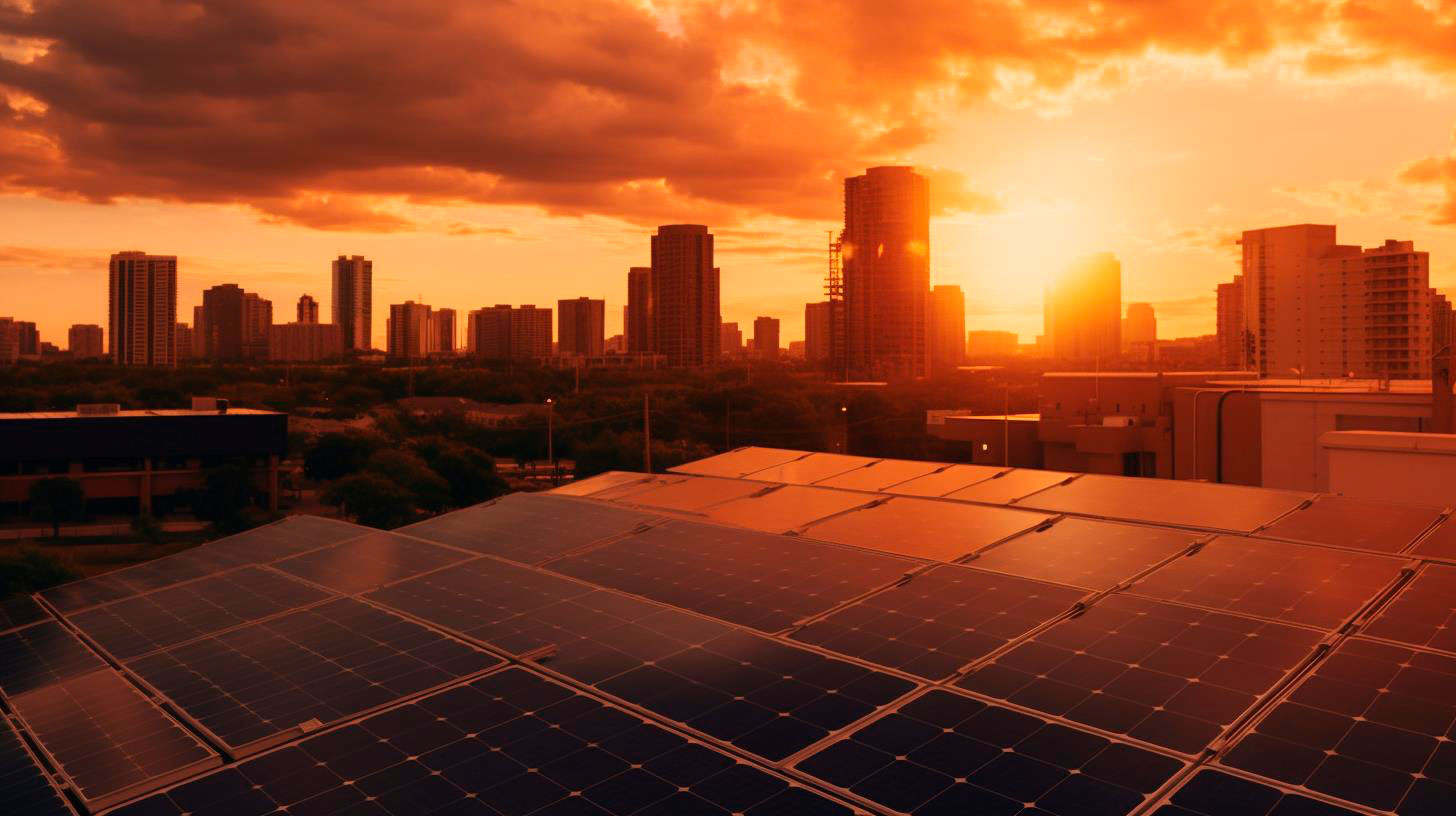Renewable Energy Adoption Mitigating the Urban Heat Island Challenge
This phenomenon poses serious risks to public health, energy consumption, and overall city sustainability. However, with an increasing emphasis on renewable energy solutions, urban areas can mitigate the UHI challenge while promoting a more sustainable future.
Understanding the Urban Heat Island Effect
The urban heat island effect is primarily caused by the modification of land surfaces due to human activities. The replacement of green spaces with concrete or asphalt, the presence of energy-intensive buildings, and inadequate ventilation systems contribute to the phenomenon. UHIs are particularly pronounced during summer nights when temperatures can be up to 22°F (12°C) higher in densely built areas compared to adjacent rural regions.
Alongside the obvious discomfort caused by extreme heat, UHIs also have detrimental effects on public health. Heat-related illnesses, such as heat stroke, dehydration, and respiratory issues, become more prevalent during heatwaves. Furthermore, the increased energy demand for cooling during UHIs puts a strain on power grids, leading to higher electricity costs and greenhouse gas emissions from energy production.
Mitigating the Urban Heat Island Challenge with Renewable Energy
Renewable energy adoption plays a crucial role in combating the UHI challenge and creating more sustainable urban environments. By leveraging renewable energy sources, cities can address two critical aspects of the problem: reducing energy consumption and minimizing heat buildup.
Reducing Energy Consumption
Renewable energy systems, such as solar photovoltaic (PV) panels and wind turbines, provide clean and abundant energy sources. By utilizing these technologies, cities can significantly reduce their reliance on fossil fuels for electricity production, consequently lowering greenhouse gas emissions.
Advantages of renewable energy adoption for mitigating UHIs:
- Decreased dependence on fossil fuels
- Reduced greenhouse gas emissions
- Lower energy costs for residents
- Increase in energy resiliency and grid stability
- Creation of green jobs
For instance, the city of Lancaster, California, has embraced solar energy and aims to become the nation’s first Zero Net Energy City. Through the installation of solar panels on buildings and homes, the city has reduced its energy consumption while simultaneously combatting the UHI effect.
Minimizing Heat Buildup
In addition to reducing energy consumption, renewable energy systems can help mitigate heat buildup in urban areas. By incorporating green infrastructure, such as green roofs and vertical gardens, cities can create cooler microclimates even in densely populated regions. Vegetation provides shade, absorbs heat, and releases moisture through evapotranspiration, resulting in lower ambient temperatures.
Key takeaways for mitigating the UHI challenge:
- Implementing green roof and vertical garden systems
- Promoting urban tree planting initiatives
- Incorporating green spaces and parks into urban planning
- Building reflective and light-colored surfaces to reduce heat absorption
Copenhagen, Denmark, is a prime example of a city utilizing green infrastructure to combat the UHI effect. Its extensive network of green roofs, vertical gardens, and parks not only enhances the city’s aesthetic appeal but also reduces urban temperatures, improves air quality, and fosters a more sustainable living environment.
Promoting Renewable Energy Adoption in Urban Areas
To accelerate renewable energy adoption and mitigate UHIs, cities should implement appropriate policies, incentives, and educational programs. Governments can play a significant role by offering tax credits for renewable energy installations and implementing energy-efficient building codes.
Key strategies for promoting renewable energy adoption:
- Establishing partnerships with renewable energy companies
- Encouraging community engagement and awareness
- Incentivizing renewable energy installations through subsidies and grants
- Creating green building certification programs
- Developing renewable energy infrastructure in urban areas
Moreover, investments in research and development are crucial for enhancing renewable energy systems, making them more efficient and affordable for urban areas.
By embracing renewable energy solutions, cities can effectively combat the urban heat island challenge while transitioning towards a greener and more sustainable future. The benefits include improved public health, reduced energy consumption, lower greenhouse gas emissions, and the creation of resilient urban environments.
Sources:
U.S. Environmental Protection Agency
City of Lancaster
State of Green
